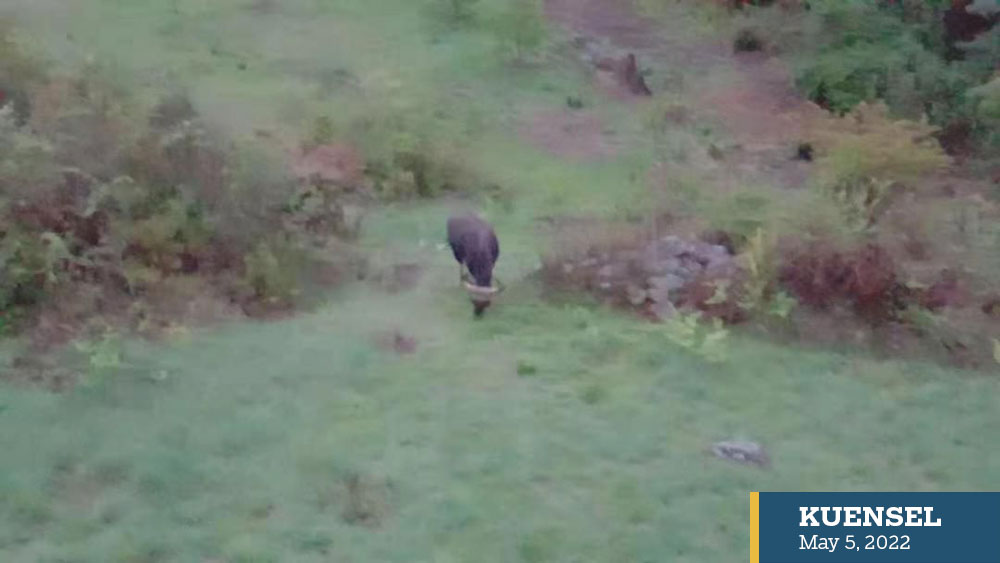Phub Dem
A 67-year-old man from Jabagoenpa in Naja gewog, Paro, who was gored by a gaur on April 28, is still recovering in the Jigme Dorji National Referral Hospital (JDWNRH).
The wild animal gored the man while he was returning home after letting his cattle for grazing.
The gaur, locally called Relang, gored the man twice from behind.
According to the victim’s son, Sonam Tshering, his father was severely injured. “We took him to hospital after calling the health officials, police and forest officials, but forest officials were not there in the gewog as they went to Paro.”
He said that his father’s leg and two ribs were broken. “My father will undergo an operation today or tomorrow.”
Local residents said no one spotted the gaur before the incident.
Sonam Tshering, who is also serving as a tshogpa for Rashigang-Jagoen chiwog questioned the unavailability of forest officials when the incident occurred, adding the public cannot do anything without assistance from the forest officials.
He said that there had been no support from the government or forest officials even when other wild animals encroached their settlement and caused menace. “There has been no assistance from anywhere in Naja so far.”
However, forest officials claim otherwise.
A forest official said that the officials in gewog visited the division office in Paro for the annual rimdro and internal coordination meeting, but after hearing about the incident, officials returned to Naja after picking up firearms. “Officials have to collect firearms from the division office when required due to security reasons.”
The official said that such incidents are rare and foresters usually blank fire and scare away the gaurs.
Sources say that gaurs usually mingle with cattle and stray around. It is advised not to go near the animal and not make them agitated. Gaur or Bos gaurus is a bovine inhabiting the country’s warmer southern foothills.Gaurs are categorised as a vulnerable species by the International Union for Conservation of Nature.
According to a research article, ‘Distribution, Abundance and Occupancy of Gaur (Bos gaurusSmith) in the Royal Manas National Park,’ gaur is one of the primary prey species for carnivores essential for the conservation of many threatened predators including tiger as the reduction of large ungulate prey leads to the declining population of the predators.
While gaurs were widespread within three ranges of the park, it states that the animal avoids disturbed areas, which calls for conservation efforts to strengthen habitat protection.


